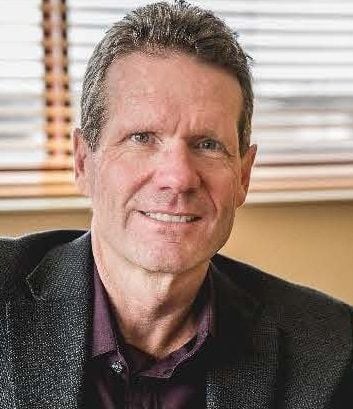Greater Dubuque Development Corp. officials plan to focus on goals that would increase the area’s workforce over the next five years.
Organization officials will announce goals for their 2027 capital campaign, along with their efforts to raise at least $11 million, at a kickoff event tonight.
One of the organization’s biggest goals of the next five years is to increase Dubuque County’s workforce to more than 64,000 people. GDDC President and CEO Rick Dickinson said the group’s five-year campaign for 2022 also included a workforce goal of 64,000, but the most-recent data available shows that number only had reached 59,900.
“We took a tremendous hit in the number of workers in the county with the (COVID-19) pandemic,” he said. “The primary, No. 1 goal for the next five years of the campaign is to get to that number, as well as increase our population. We believe that is achievable.”
Dickinson said about 1,500 people dropped out of the workforce in the greater Dubuque area during the pandemic but continue to live there. About a quarter of these workers are retirees, he said.
The other 75% of these workers are primarily women, he said. Many families went from being a two-income household to a one-income household so someone could stay home with children during the pandemic, and the child care role typically fell to women.
“We believe that those individuals will now be returning to the workforce due to inflation, as well as increases in other things,” Dickinson said.
He pointed to many ongoing programs and discussions to address the need to recruit, retain and educate workers in the area, including a revamped AccessDubuqueJobs.com. Changes to the job-search website, operated by GDDC and the Telegraph Herald, were unveiled last month.
Dickinson also mentioned the Opportunity Dubuque initiative, which supports tuition-free training for 18 certificates through Northeast Iowa Community College.
Additional 2027 goals include raising the population of Dubuque County to 105,000. Dickinson said officials believe the county population will exceed 100,000 people by the end of this year.
Tim Hodge, CEO of Hodge and GDDC Board of Directors chair, said population growth always has been important to GDDC but now needs to be near the top of the goal list.
“We’re trying to grow our population by 5% at a time when the population in almost every other county in the state is declining,” he said. “We need to buck that trend in our state.”
He added that strategies related to population growth will be fluid over time, but having more people living in the county will help attract more businesses going forward.
“We can’t continue to recruit businesses into our community if we have a reputation of not being able to fill positions,” Hodge said. “Luckily, we don’t have that. Despite the fact that there are those in the community who struggle with finding people, it’s easier here than other places in the country.”
Another GDDC goal is to reach a median household income of $76,000 in the county over the next five years. Dickinson said the median household income increased from about $56,000 in 2017 to just more than $63,000 in 2021.
Dickinson said officials also hope to see $1 billion in residential and commercial construction projects in Dubuque County over the five-year period ending in 2027. The 2022 goal of $800 million in construction investments was greatly exceeded, he said, with that figure reaching around $986 million.
GDDC officials also aim to help reduce the area’s poverty rate by 5% over the next five years and have been working with Dubuque’s Office of Shared Prosperity & Neighborhood Support on that goal. Information previously shared by the office showed that Dubuque’s federal poverty rate sits at 15.9% and has been rising since 2010.
“It is an unusual goal for an economic development group to identify the need to reduce poverty in the community,” Dickinson said. “Despite the economic prosperity that has existed in Dubuque in the last decade, we have seen an increase in poverty in the community. We see this as an opportunity through training to transform lives.”
Strategies going toward this goal are to work on offering scholarships for people to receive job training, as well as to develop solutions to barriers to transportation and child care that may prevent some people from taking advantage of training opportunities, Dickinson said.
“We need to continually work on strategic initiatives for Dubuque to be a community of choice, whether that’s in housing, child care, transportation or recreational opportunities,” he said. “Those are the things that make the greater Dubuque area a great place to live.”



